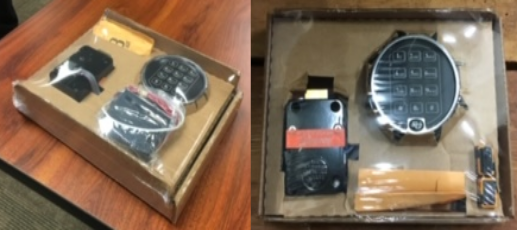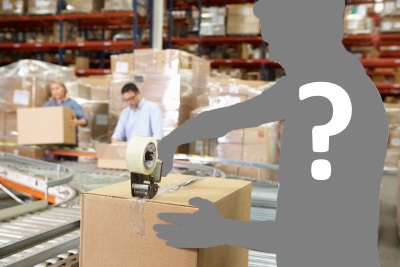Designing the Right Package for Your Customers Now
by Mark Matthews
Posted on May 14, 2020
I. Begin with the problem in mind

What is the problem that you are trying to solve? What would your customer say the problem is? Do these viewpoints conflict or mesh with one another?
So many times, we find that customers take a partial view of this important question. To find the right solution, it is critical to start with a clear definition of the problem to be solved. To do otherwise, is merely a waste of time.
With the right packaging partner, you can work to refine the project so that all resources are aligned to solve the problem at hand. Then you can ensure that any ideas you have align with your customer's goals. Once this is achieved, then the project can move full steam ahead and accelerate your financial results.

II. Get internal packaging working with external packaging
As you select your packaging partner, be sure to find one that can represent a wide range of possible solutions, and not be confined to only one product. As the old saying goes "If all you have is a hammer, every problem looks like a nail.". You want to align with a partner that is product agnostic and can offer a wide range of possible solutions.
 Corrugated is the #1 packaging product expense, and for good reason. It is a versatile medium that allows it to be used in a wide variety of situations.
However, corrugated has its drawbacks and is not the best solutions in many instances. Our team finds that many customers use too much corrugated as they
look to get their products to market. Many times, this results in over packing with corrugated to solve a packaging problem that can better be solved
with another packaging product.
Corrugated is the #1 packaging product expense, and for good reason. It is a versatile medium that allows it to be used in a wide variety of situations.
However, corrugated has its drawbacks and is not the best solutions in many instances. Our team finds that many customers use too much corrugated as they
look to get their products to market. Many times, this results in over packing with corrugated to solve a packaging problem that can better be solved
with another packaging product.
 Our mantra is to make sure that" internal packaging works with external packaging". We want to use the best product available to solve the problem at hand.
We do not want to overuse corrugated when a more effective, less costly material may be used instead. Typically, these alternative products will be used
inside the corrugated carton to cushioning, block, or brace the product inside, thus, securing it from damage in handling and transit.
Our mantra is to make sure that" internal packaging works with external packaging". We want to use the best product available to solve the problem at hand.
We do not want to overuse corrugated when a more effective, less costly material may be used instead. Typically, these alternative products will be used
inside the corrugated carton to cushioning, block, or brace the product inside, thus, securing it from damage in handling and transit.
III. Design the package with automation in mind

The Covid 19 virus has rocked the economy and sent unemployment numbers soaring in the past few weeks. Prior to this, labor shortages, especially unskilled labor, were at record lows, leaving many companies short handed when time to fill their packaging lines. We expect that, over time, labor shortages will continue to be with us, thereby, making automation an even more important part of any company's packaging line strategy.
As you look to design a new package for your customer base, it is recommended that you consider your automation opportunities as an integral part of the package
design discussion. Whether driven by social distancing rules, or simply a need to do more with less, packaging equipment helps customers meet their production
goals every day. Automation takes many forms from robotics to end of line packaging equipment. New technologies emerge every year and it is important that you
partner with a company that remains on the cutting edge of these changes in technology.

Keep in mind that automation need not be expensive. There are many good automation ideas in the $7,500 - $50,000 range that will greatly improve your output. Yes, it is possible to spend much more, but you may not have to. A well-educated packaging partner will guide you through available options and benefits.
IV. Perform the Cost Benefit Analysis

Many great ideas on paper are not practical in the real world. This is one of many good reasons to perform a cost benefit analysis to understand if the project deserves funding. A well-informed packaging partner will be able to list the benefits for each solution to be considered along with a cost benefit analysis. In the early stages of consideration, this might be a quick, "back of the envelope" calculation to see if there are savings on a macro level. As the project moves through future stages, these numbers will be refined in collaboration with the customer so that one or two options clearly stand out from the rest.
V. Agree on the definition of success
 Once a path has been agreed upon, how will you know if this new package design is working? Establishing a clear set of metrics will help determine this for you.
You can track important metrics such as increased sales, output numbers, expense reduction, and many more. Having these will let you know if you are on the right
track, or if you need to re-tool your strategy. Then following these metrics for an extended period will help ensure a successful outcome for your company.
Once a path has been agreed upon, how will you know if this new package design is working? Establishing a clear set of metrics will help determine this for you.
You can track important metrics such as increased sales, output numbers, expense reduction, and many more. Having these will let you know if you are on the right
track, or if you need to re-tool your strategy. Then following these metrics for an extended period will help ensure a successful outcome for your company.
